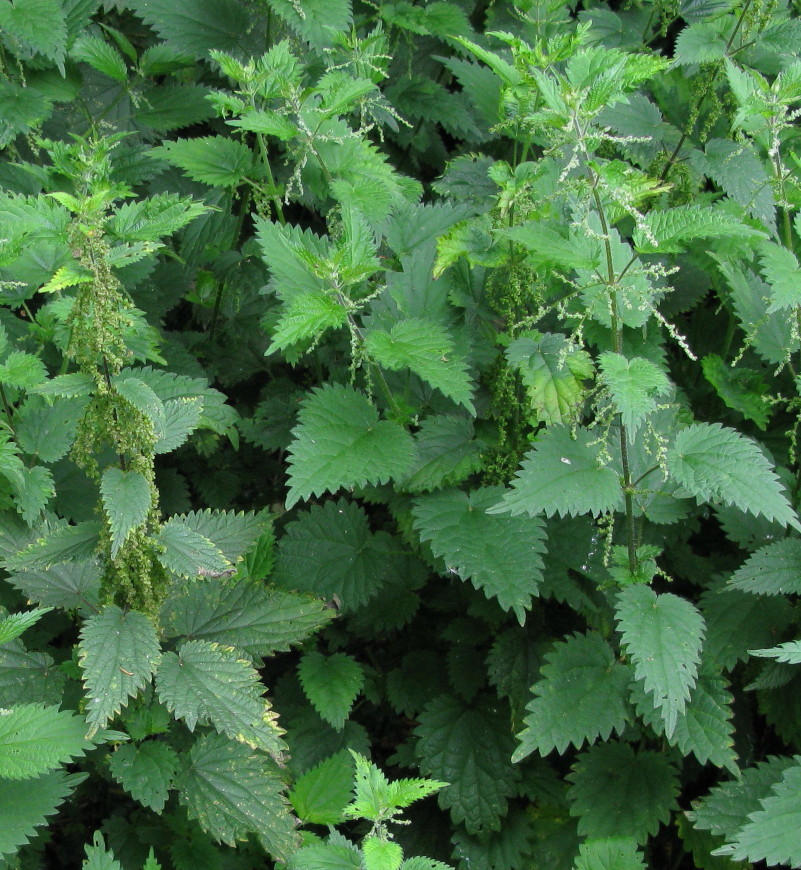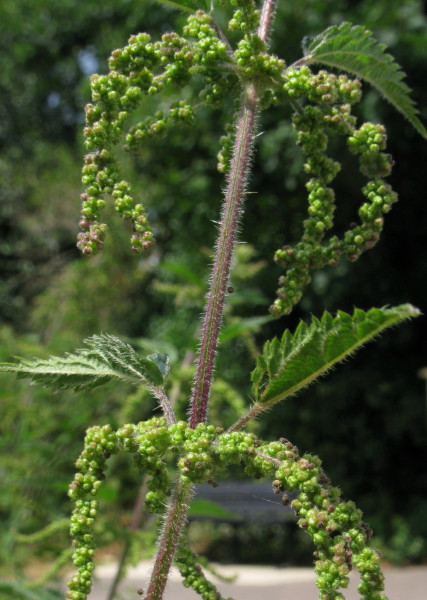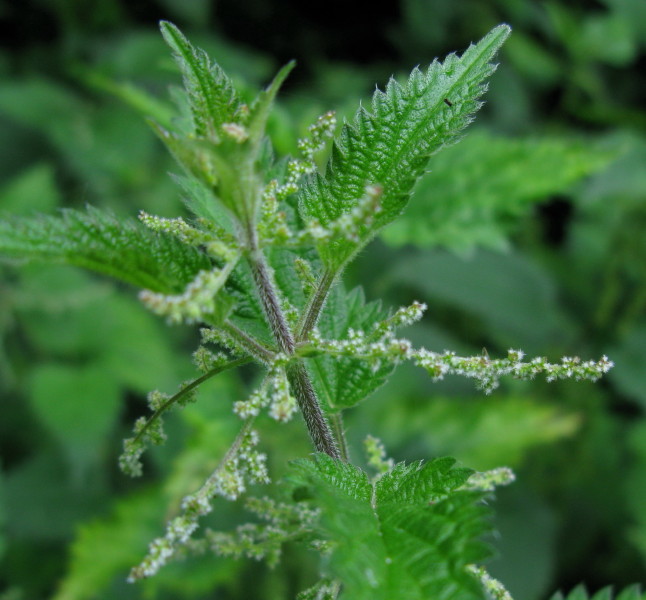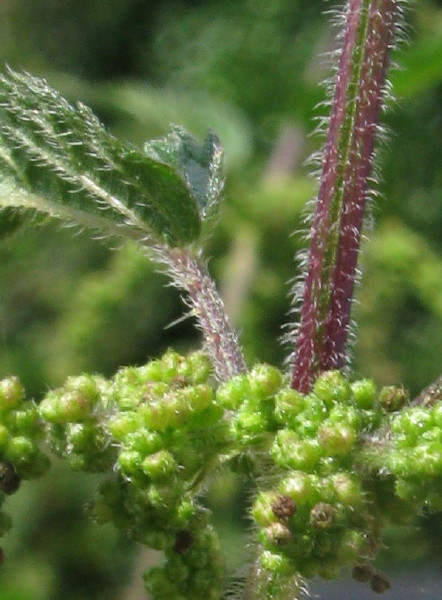
| Stinging Nettle (Common Nettle) | Nettle family |
| Urtica dioica | Urticaceae |
The Stinging Nettle is one of the most prolific wildflowers in Britain,
often forming large patches especially on waste ground.
It can spread rapidly by means of its underground creeping yellow stems,
and is thus a pest in gardens, as the whole rootstock must be dug up otherwise it continues to spread.
The stinging hairs on its leaves and stems are hollow with brittle tips which break off and penetrate the skin,
injecting an irritating fluid (formic acid and histamine-like juice).
The plant is dioecious, with male and female flowers on separate plants.
The stems are a source of fibre, and the shoots and leaves can be used in nettle soup.
Caterpillars of several butterflies (such as the Peacock) feed on its leaves.
 |
|
 |
|
 |
|
 |
| Male flowers | Female flowers | Stinging hairs, with male flowers |
|
Technical Information
Perennial herb, 2-4 feet tall but can be as high as 6 feet Stems square, unbranched, covered with hairs Yellow fleshy roots, which branch and spread vigorously Leaves opposite, stalked, ovate or lance-shaped, sharply toothed, coming to a point, up to 8cm long, covered with stinging hairs. Leaves longer than stalks (unlike the Small Nettle) Flowers: green, no petals, 4 sepals and 4-5 stamens. Flowers hang in loose panicles (like catkins). Male and female flowers on separate plants (dioecious). Flowering time: July-September Habitat: Waste ground; also woods, roadsides and hedgerows, especially on rich soils Distribution: Very common throughout Britain |
Nettle family